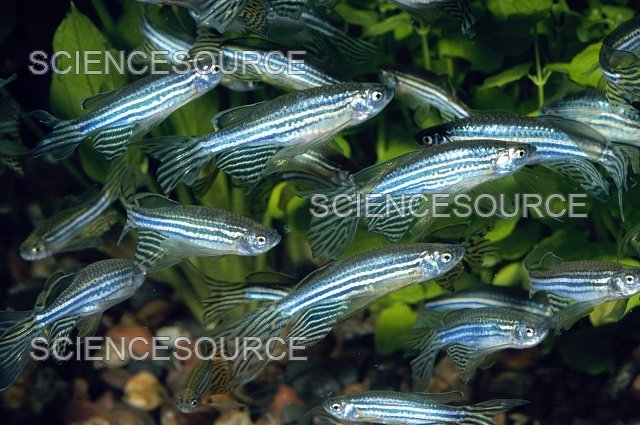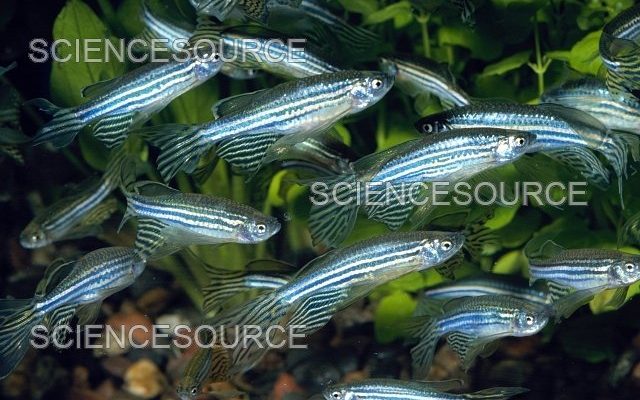
Understanding the behavior of Zebra Danios is more than just a casual interest; it’s essential for anyone who keeps them as pets. Whether you’re a beginner or have some experience, being able to interpret their antics can lead to a healthier, happier tank. Let’s dive deeper and unravel what their behaviors mean, what to watch for, and how to ensure you’re creating the best environment for these lively fish.
What Makes Zebra Danios Unique?
Zebra Danios are small fish known for their vibrant stripes, resembling a miniature zebra—hence the name! They typically grow to about 1.5 to 2 inches in length and are quite active. This activity level is a crucial aspect of their behavior that every owner should recognize. They thrive in schools of five or more, which means they’re social fish that enjoy the company of their own kind.
You might be wondering why that matters. Well, keeping them in groups mimics their natural habitat, helping reduce stress and encourage natural behaviors. When they’re kept in smaller numbers, you can often see signs of stress, such as hiding or lethargy. So, if you’re considering these fish, remember: happy Zebra Danios are often found swimming in schools!
Common Behavior Patterns
Observing your Zebra Danios can be quite entertaining. Some of their behavior patterns can indicate how they’re feeling. For example, active swimming is a good sign; they dart from one end of the tank to the other, exploring their environment. This energy usually means they feel safe and happy.
Another behavior to watch for is schooling. When they swim together, they create a beautiful sight. This schooling behavior can help you gauge the health of your fish. If one fish is isolated or swimming alone, it might be worth investigating. It could signal stress or illness, which you’ll want to address promptly.
Lastly, you might notice them flaring their fins. This can be a sign of excitement or sometimes a way to establish dominance. It’s fascinating how intricate their interactions can be, and paying attention to these details can lead to a more enriching experience as an aquarist.
Understanding Stress Signals
Just like any living creature, Zebra Danios can experience stress, and it’s vital to recognize the signs. Stress can be caused by various factors, such as poor water quality, overcrowding, or sudden changes in their environment. Here are some behaviors to keep an eye on:
- Hiding: If you notice your Danios staying hidden for long periods, it might mean they’re feeling anxious.
- Faded Colors: Healthy Danios boast vibrant colors. If their stripes start to fade, that could be a stress signal.
- Unusual Swimming Patterns: If they’re swimming erratically or staying near the surface, something may be off.
Catching these signs early can make a big difference. If you suspect stress, evaluate their tank conditions. Check for water quality, temperature, and overall tank mates. Addressing these issues promptly can help restore their energetic nature.
Social Interactions and Hierarchies
Zebra Danios are social creatures, and their interactions can tell you a lot about their social structure. In a community tank, they often establish a loose hierarchy. You might see one fish swimming more prominently, which could be an indication that it has established a dominant position.
This dominance doesn’t always mean aggression; often, it involves showing off or asserting themselves through playful interactions. However, be cautious—if you notice consistent bullying or fin nipping, you may need to rearrange tank mates or add more hiding places to give the less dominant fish a break.
Interestingly, their social behavior can change depending on the number of fish in the tank. In larger groups, you may see more playful interactions, while smaller groups might lead to more skittish behavior. It’s a delicate balance, and awareness of their social dynamics can help you foster a peaceful environment.
Feeding Behavior
Watching your Zebra Danios during feeding time can be quite the show. They’re enthusiastic eaters, often zipping to the surface as soon as food hits the water. This behavior isn’t just entertaining; it also indicates they are in good health.
It’s worth noting that how they react to feeding can also change based on their diet. Some fish will be more interested in flake food, while others might prefer pellets or even live foods like brine shrimp. You might be surprised how quickly they’ll learn to associate you with feeding time, sometimes even darting to the front of the tank when they see you approach!
However, it’s essential to strike a balance with their diet. Overfeeding can lead to waste buildup and water quality problems. Sticking to a feeding schedule—with small amounts ensures they stay happy and healthy without overindulging.
Creating the Right Environment
To truly understand and appreciate Zebra Danios, it’s crucial to create an optimal living environment. These fish thrive in clean water with stable temperatures, ideally between 70°F to 78°F. You’ll want to perform regular water changes and monitor pH levels regularly.
Decorations like live plants, rocks, and open swimming areas will encourage natural behaviors. They love to explore and hide, so include both shelter and space. If you’re housing them with other species, make sure those tank mates have similar temperaments. Fish that are too aggressive could stress out your Danios.
Don’t forget about the tank size—while they can live in smaller tanks, larger environments (30 gallons or more) will provide a better habitat. This space allows for more swimming room and helps maintain water quality.
The behavior of Zebra Danios offers a fascinating glimpse into the lives of these vibrant little fish. By understanding their social interactions, stress signals, and feeding habits, you can create a thriving environment that promotes their well-being. Watching them swim in schools, explore their surroundings, and interact with one another can be one of the most rewarding aspects of keeping fish.
So, if you’re a proud owner of Zebra Danios, keep an eye out for their unique behaviors. They’re more than just eye candy; they’re living beings with personalities. By paying attention to their needs, you can not only enhance their quality of life but also enjoy the joyful spectacle they provide in your tank. Happy fishkeeping!

